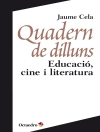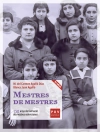This volume presents multiple perspectives on the uses of the history of mathematics for teaching and learning, including the value of historical topics in challenging mathematics tasks, for provoking teachers’ reflection on the nature of mathematics, curriculum development questions that mirror earlier pedagogical choices in the history of mathematics education, and the history of technological innovations in the teaching and learning of mathematics. An ethnomathematical perspective on the history of mathematics challenges readers to appreciate the role of mathematics in perpetuating consequences of colonialism. Histories of the textbook and its uses offer interesting insights into how technology has changed the fundamental role of curriculum materials and classroom pedagogies. History is explored as a source for the training of teachers, for good puzzles and problems, and for a broad understanding of mathematics education policy.
Third in a series of sourcebooks fromthe International Commission for the Study and Improvement of Mathematics Teaching, this collection of cutting-edge research, stories from the field, and policy implications is a contemporary and global perspective on current possibilities for the history of mathematics for mathematics education. This latest volume integrates discussions regarding history of mathematics, history of mathematics education and history of technology for education that have taken place at the Commission’s recent annual conferences.
Table of Content
Part I: The use of history in the teaching of mathematics.- Chapter 1. The exploration of Inaugural understandings in the history of mathematics and its potential for didactic and pedagogical reflection.- Chapter 2. The value of historical knowledge through challenging mathematical tasks.- Chapter 3. An historic approach to modelling: enriching high school student’s capacities.- Chapter 4. The introduction of the algebraic thought in Spain: the resolution of the second degree equation.- Part II: History of mathematics and its relation to mathematical education.- Chapter 5. Mathematics Education in Different Times and Cultures.- Chapter 6. Integrating the history of mathematics in mathematics education: examples and reflections from the classroom.- Chapter 7. Re-constructing the image of mathematics through the diversity of the historical journeys of famous mathematicians.- Chapter 8. History of Ethnomathematics: Recent developments.- Part III: The role of history in the process of training the mathematician.- Chapter 9. Problems and puzzles in history of mathematics.- Chapter 10. The potential in teaching the history of mathematics to pre-service teachers. Chapter 11. The role of history in enriching mathematic teachers’ training for Primary Education.- Chapter 12. Recent trends of history of Mathematics Teacher Education.- Part IV: Technology in the recent history of Mathematics Education.- Chapter 13. Tools and technologies in a sociocultural approach of learning mathematical modelling.- Chapter 14. Technology in primary and secondary school to teach and learn mathematics in the last decades.- Chapter 15. A Trajectory of Digital Technologies Integration in Mathematical Education in Brazil: challenges and opportunities.- Chapter 16. History, Technology and Dynamic Geometry: From resources with static construction to DGE with touchscreen.
About the author
Sixto Romero Sánchez is a past Vice President and current member of the International Commission for the Study and Improvement of Mathematics Education (CIEAEM) and the president of the Iberio-American Academy of La Rabida. He is the Editor in Chief of Review MSEL (Modeling in Science Education and Learning) and a member of the Advisory Council of the Union Magazine -FISEM-Ibero-American Federation of Mathematics Teachers Societies.
Ana Serradó Bayés is currently the Vice President of the International Commission for the Study and Improvement of Mathematics Education (CIEAEM), Vice President of the Education Commission of the Royal Spanish Mathematics Society (RSME) and a member of the Education Commission of the European Mathematical Society (EMS). She has an extensive record of publications in mathematics teacher professional development, statistics education, evaluation instruments, reading in mathematics classrooms, and technology integration in mathematics education.
Peter Appelbaum is a past Vice President of the International Commission for the Study and Improvement of Mathematics Education (CIEAEM) and Director of the Youth Mathematician Laureate Project. He has an extensive record of publications in curriculum theory, post-colonial and critical ethnomathematics education, and creative approaches to teaching and learning mathematics including, Embracing Mathematics: On Becoming a Teacher and Changing with Mathematics (Routledge, 2007), and Popular Culture, Educational Discourse, and Mathematics (SUNY Press, 1995).
Gilles Aldon is the current President of the International Commission for the Study and Improvement of Mathematics Education (CIEAEM), past Director of the Educ Tice interdisciplinary research team working on the use of technology in education, and former Assistant Director of IREM of Lyon (Research Institute on Mathematics Education). He is a faculty member in mathematics and mathematics education in the Ecole Normale Supérieure de Lyon, and has an extensive publication history on the uses of technology in mathematics education, assessment, and augmented reality in education. Professor Aldon is one of the editors of Mathematics and Technology: A C.I.E.A.E.M. Sourcebook (Springer, 2017).












